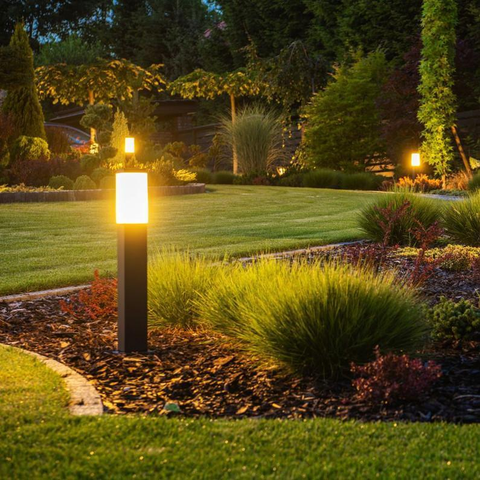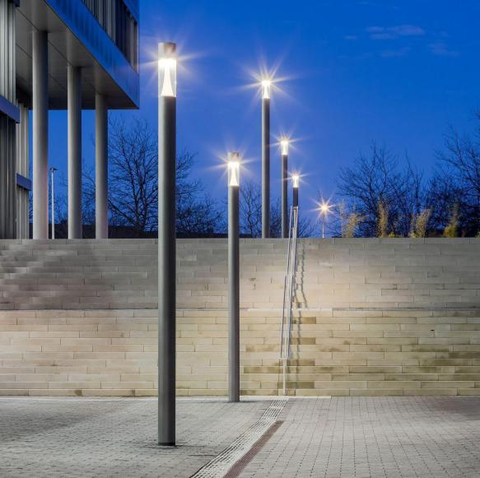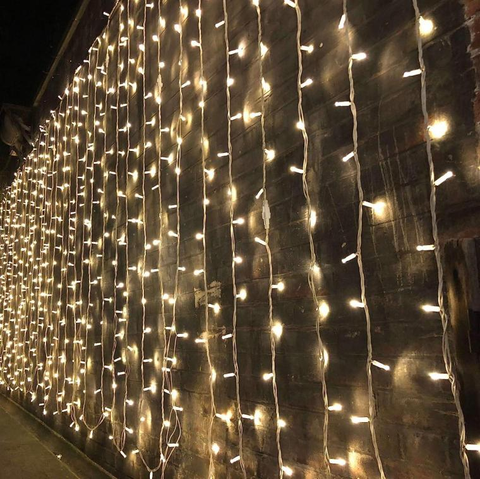Outdoor lighting isn’t just about illuminating your backyard; it's about creating a safer, more secure environment while adding an extra touch of beauty to your outdoor spaces. Whether you're looking to enhance your garden’s charm, create a cozy ambiance on your patio, or improve the safety of your driveway, there’s a wide range of lighting options available. In this guide, we'll explore the different types of outdoor lighting and how to install them, making sure your space is not only functional but also visually appealing.
Outdoor Bollard Lights: Elegant and Practical
Outdoor bollard light are a perfect way to add sophistication and functionality to your outdoor space. These tall, elegant fixtures are commonly used to illuminate pathways, driveways, gardens, or entranceways. Crafted to resemble slender pillars, they can seamlessly blend into various outdoor settings, offering both functional and decorative lighting.
You’ll find outdoor bollard light to be an excellent solution for guiding guests through your garden or along a walkway. Their tall design makes them visible from afar, creating an inviting atmosphere. When choosing bollard light, consider the height and design that complements your outdoor decor.
Installation Tips for Outdoor Bollard Light:
To ensure proper lighting, make sure to place your columns in areas that need consistent illumination. Pathways and driveways are ideal, but don’t forget to clear the space of any debris before installing them. Be mindful of their location to avoid blocking important walkways. For electrical wiring, we recommend consulting a professional to avoid any potential hazards, especially if the column fixtures require direct wiring to the power source.
Where to Buy Outdoor Bollard Light:
For high-quality, durable outdoor bollard lighting, check out our outdoor bollard light collection. These fixtures are designed to withstand various weather conditions while providing long-lasting illumination.
Outdoor Lanterns & Lamps: Cozy and Inviting
Outdoor lanterns and lamps offer a versatile lighting solution, perfect for creating a warm, welcoming ambiance. Whether you're hosting a summer dinner party or simply want to enhance the mood on your patio, these fixtures add charm and practicality. Available in different designs and voltage options, outdoor lanterns can serve as both decorative accents and functional light sources.
Outdoor lamps, which come in freestanding or portable designs, offer more flexibility in terms of placement. Many outdoor lamps use LED or incandescent bulbs, so you can choose between energy-efficient and traditional lighting options depending on your needs.
Installation Tips for Lanterns and Lamps:
When installing outdoor lanterns, consider where the natural light falls in your space, as well as the power source. If you don’t have convenient access to electrical wiring, solar-powered lanterns are an excellent alternative. For lamps, ensure the fixtures are level and securely attached to avoid any potential falls or instability.
Explore Our Collection of Outdoor Lanterns & Lamps:
Discover stylish, weather-resistant lanterns and lamps in our outdoor lanterns section, and bring a warm, inviting glow to your garden or patio.
String Lights: Effortless Ambiance
String lights are a fantastic way to bring a touch of magic to your outdoor area. Whether it’s a cozy backyard gathering or a festive garden party, these small electric lights strung along fences, trees, or pergolas create a relaxed, enchanting atmosphere. Their gentle glow can transform any space, making it perfect for both casual and elegant settings.
Where to Use String Lights:
String lights are great for accentuating outdoor structures like fences, trellises, and gazebos. They’re also ideal for commercial spaces such as restaurants and bars, adding character and warmth.
Installation Tips for String Lights:
Before installing string lights, measure the area to ensure you have enough length to cover your desired space. For a seamless look, use nails or hooks to secure the lights, making sure they’re evenly spaced and easy to hang. You can even mix different colors or designs to match seasonal themes or holidays.
Shop for String Lights:
Our selection of outdoor string lights is perfect for any occasion. Choose from various styles and lengths to create the perfect ambiance in your outdoor space.
Outdoor Ceiling Lights: Practical and Stylish
Outdoor ceiling lights, also known as flush mount lights, are ideal for porches, patios, or entryways where you need overhead illumination without the clutter. These fixtures offer subtle, functional lighting that helps illuminate entryways, stairwells, and more.
Where to Use Ceiling Lights:
Outdoor ceiling lights are perfect for areas that require overhead illumination, such as your porch, balcony, or garage. They are also ideal for walkways and hallways where you need bright, consistent light to ensure safety.
Installation Tips for Ceiling Lights:
Make sure the light fixture you choose has a protection rating of at least IP4 to ensure it can withstand outdoor conditions. Always follow the manufacturer’s installation instructions to ensure safety and proper function.
Shop Outdoor Ceiling Lights:
Browse our ceiling light collection to find stylish, durable fixtures that are perfect for your outdoor spaces.
Landscape Lighting: Elevate Your Garden’s Beauty
Landscape lighting goes beyond simple functionality; it enhances the beauty and ambiance of your garden or yard. From highlighting trees and sculptures to creating dramatic shadows across a pathway, landscape lighting adds depth and visual interest. It’s also an essential feature for increasing security and visibility, especially around fences and boundaries.
Where to Use Landscape Lighting:
Use landscape lighting to highlight architectural features, illuminate garden beds, or light up property boundaries. Whether it’s for a private garden or a public landscape, landscape lighting offers practical and aesthetic benefits.
Installation Tips for Landscape Lighting:
Before installation, map out the areas you want to light. Consider wire routes carefully, especially when you’re dealing with underground cables or irrigation lines. If you’re using low-voltage lighting, installing a transformer will be necessary to ensure the system operates effectively.
Shop Landscape Lighting Options:
Check out our landscape lighting range for outdoor lights designed to bring your garden to life.

Ensuring proper power sources, choosing fixtures rated for outdoor use, and following installation guidelines are essential steps to achieve a well-lit and visually appealing outdoor space.
Choosing the Right Outdoor Lighting Types
Selecting the right outdoor lighting depends on your goals for your space. Are you looking to enhance your garden’s aesthetic? Or perhaps you need lights to improve security and visibility? Whatever your objectives are, it’s important to choose the fixtures that align with your vision.
|
Objective |
Application Type |
Best Fixtures |
|
Create Focal Points |
Entrances, Patios |
Lamps |
|
Highlight Landscaping |
Trees, Bushes |
Bollard Lights |
|
Improve Safety |
Driveways, Stairs |
Outdoor Ceiling Lights |
|
Illuminate Pathways |
Walkways, Gardens |
Lantern Lights |









